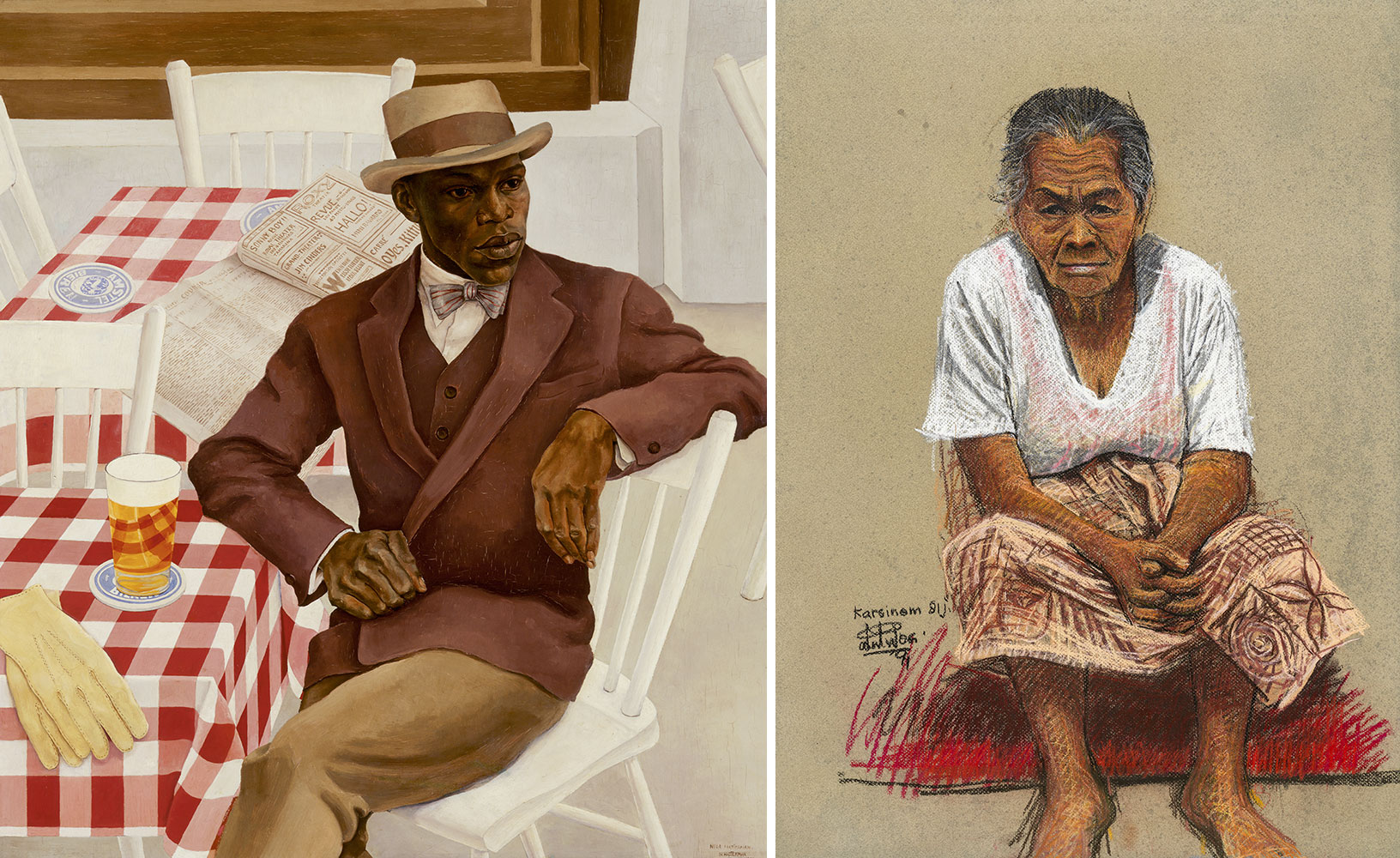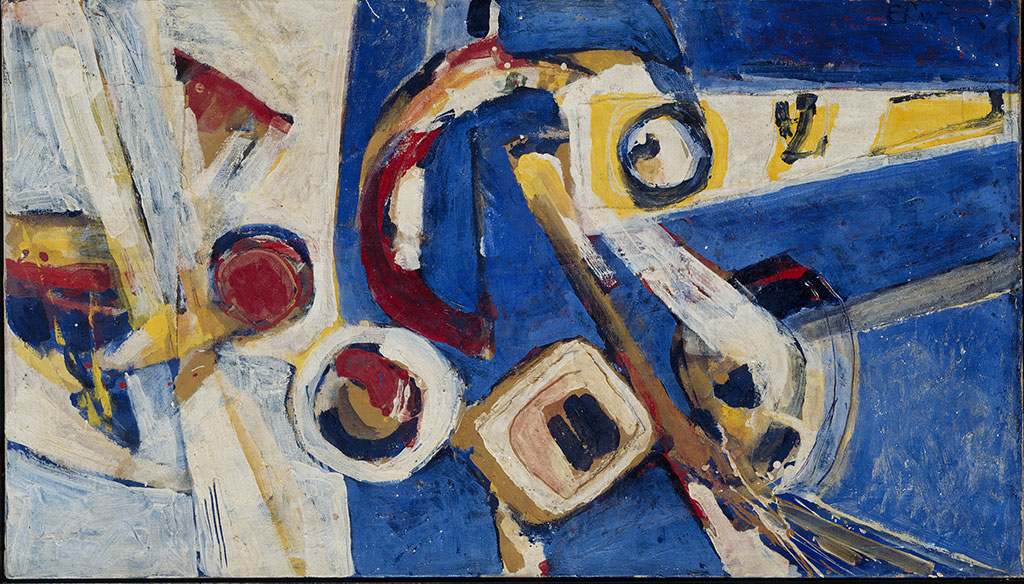ART CITIES:Amsterdam-Surinamese School
 The exhibition “Surinamese School” is a celebration of Surinamese painting in all its diversity and depth. Presenting over 100 artworks by 35 artists, the exhibition explores the key themes and narratives at the heart of Surinamese painting from 1910 to the mid-1980s. Depictions of Surinamese history, spirituality and everyday life, alongside forays into abstraction, and social change, gave shape to artistic developments.
The exhibition “Surinamese School” is a celebration of Surinamese painting in all its diversity and depth. Presenting over 100 artworks by 35 artists, the exhibition explores the key themes and narratives at the heart of Surinamese painting from 1910 to the mid-1980s. Depictions of Surinamese history, spirituality and everyday life, alongside forays into abstraction, and social change, gave shape to artistic developments.
By Dimitris Lempesis
Photo: Stedelijk Museum Archive
The exhibition “Surinamese School” explores the various artistic positions that were instrumental in the development of Surinamese visual arts. A team of guest curators identified the artist-innovators who put Surinamese art on the map. Some artists combined their artistic practice with social and political activism, in pursuit of a (culturally) independent Suriname. The exhibition also features a significant number of works by artists who lived and worked in Amsterdam for many years such as Armand Baag and Quintus Jan Telting. Suriname is one of the smallest countries in South America, yet its population is one of the most ethnically diverse in the region. Formerly known as Dutch Guiana, Suriname was a plantation colony of the Netherlands that gained its independence on 25/11/1975. From 1980 to 1987 the country was governed by a succession of military regimes. A new civilian constitution was approved in 1987. Another military coup took place in 1990, but the country returned to civilian rule the following year. In the year in which Suriname celebrates 45 years of independence, the exhibition also recalls the country’s shared history with the Netherlands. One of the legacies of prolonged Dutch colonial rule, for example, led to a dearth of professional art education and, for many years, Surinamese artists were compelled to leave their own country to pursue their art training in the Netherlands. After graduating, many artists returned to Suriname permanently or temporarily. Jules Chin A Foeng completed his education in the Netherlands and, upon returning to Suriname, championed Surinamism in his work and in art education. In addition to art training in their own country, which evolved against a backdrop of mounting nationalism, processes of decolonisation and nation-building, the artistic dialogue between Suriname and the Netherlands impacted the work and life of various artists in the exhibition.
Participating Artists: Armand Baag, Wim Bos Verschuur, Robert Bosari, Jules Chin A Foeng, Frank Creton, Augusta and Anna Curiel, Felix de Rooy, Robbert Doelwijt, Wilgo Elshot, Ron Flu, Rudi Getrouw, Leo Glans, Eddy Goedhart, Nola Hatterman, Soeki Irodikromo, Rihana Jamaludin, Jean Georges Pandellis, Rinaldo Klas, Noni Lichtveld, Hans Lie, Guillaume Lo-A-Njoe, Nic Loning, Rudy Maynard, Jacques Anton Philipszoon, George Ramjiawansingh, Stuart Robles de Medina, George Gerhardus Theodorus Rustwijk, Cliff San A Jong, Gerrit Schouten, Govert Jan Telting, Quintus Jan Telting, René Tosari, Erwin de Vries, Paul Woei and Leo Wong Loi Sing.
Photo: Jules Chin A Foeng, Chinese Flip-Flops, 1980-1983, oil on canvas. Collection Patrick Chin A Foeng
Info: Curatorial team: Mitchell Esajas, Inez Blanca van der Scheer, Ellen de Vries, Jessica de Abreu, Bart Krieger, Carlien Lammers and Claire van Els, Stedelijk Museum, Museumplein 10, Amsterdam, Duration: 12/12/2020-31/5/2021, Days & Hours: Daily 10:00-18:00 (Booking Required), www.stedelijk.nl

Right: Frank Creton, Refugee, 1983, collection Factor-IJ. Photo: Gert Jan van Rooij

Right: Paul Woei, Portrait Karsimen, 81 years, 1991, chalk on paper. Collection Niemel, Rotterdam


Right: René Tosari, Untitled (400 years of Resistance and Fight Suriname), 1981, linocut on paper. Collection René Tosari


Center: Jules Chin A Foeng, Portrait of the Artist’s Grandmother, 1973, collection Patrick Chin A Foeng, Leiderdorp. Photo: Gert Jan van Rooij
Right: Wilgo Elshot, Muriël, 1982, collection P. F. Elshot, Amsterdam. Photo: Gert Jan van Rooij

